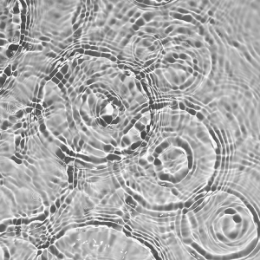From 26-28 November 2024, the 5th RESIST Consortium Meeting brought together partners from 12 European regions in the historic city of Plasencia, Spain. The event marked a significant milestone for the project aligning partners on the next steps in the RESIST Project’s mission. It also allowed participants an opportunity to immerse themselves in the local culture and environment of the Sierra de Gata, meet local producers and landowners, and see all the work the project is helping to develop in the region.
3 Days of Meetings and Networking
Held at the Palacio de Congresos de Plasencia, the meeting featured in-depth discussions on the regional transfer plans and the Community of Practice (CoP), where participants exchanged strategies for building more robust and resilient networks across Europe.
The RESIST approach was not to list all the solutions at the beginning of the project, but to accompany the regions during the first year or so to jointly select the best solutions, because these are the ones that will really work for the local community – Explained Vilija Balionyte-Merle, RESIST project coordinator and Senior Business Developer at SINTEF
She also mentioned that’s what the transfer plans are for, to carefully select the solutions that will be further tested and shared between the lead and partner regions of the project.
Updates on key innovations, such as Catalonia’s Multi-Hazard Early Warning tools and participatory citizen toolkits, highlighted the project’s growing impact. “Our discussions on transferability are vital,” remarked a RESIST partner Regional Utveckling – Region Blekinge and Blekinge Tekniska Högskola, from Sweden. “The tools and methods we’re sharing are transformative, and workshops like these ensure their relevance and effectiveness across diverse regions.”
Field Visits: Discovering Sierra de Gata
The real heart of the event was outside the conference halls. A field trip to the fire-stricken areas of the Sierra de Gata offered participants a sobering yet hopeful perspective. Guided by experts from Universidad de Extremadura (UEX), FUNDECYT-PCTEX, and the Gobierno de Extremadura, the group learned about the region’s innovative mosaic territory approach, which integrates sustainable land use with biodiversity restoration to mitigate wildfire risks.
“Hearing directly from those on the ground — scientists and landowners — was both moving and enlightening,” shared the attendant Fenjuan Hu on her Linkedin. “Their experiences are invaluable as we adapt these lessons for other regions.”
The visit included a stop at a local ecological cheese producer, Terra Capra, where herder José Antonio explained how his goats make the landscape more resilient to wildfires and enhance rural economies. The farm, located in the village of Cadalso, is collaborating with RESIST partners at the UEX to test out the mosaic methodology of landscape management.
The group also visited private landowner Luis Mariano in Villasbuenas de Gata to hear first-hand how he is managing his land with regenerative practices and the mosaic method in order to prepare for the region’s recurring forest fires.
Fernando Pulido, Professor of Forestry and Conservation at the UEX, summed it up when he told fellow RESIST partners: “fires cannot be fought without people”.
José Antonio and Luis Mariano are two examples of the people and communities on the front lines of wildfire mitigation in the region of Extremadura. Both are trying to revitalise rural economies and communities as a way to prevent forest fires.
In her welcoming remarks, Lourdes Diaz, part of the UEX management team, said it was crucial “to train the new managers of our forests, we need to show them how to do it.”
Experiencing Extremadura
Beyond the project discussions, the event offered a chance to experience the rich culture and traditions of Extremadura. From exploring the historical charm of Plasencia to enjoying local cuisine during a social dinner, participants forged deeper connections while gaining a better understanding of the region’s cultural and historic significance.
As the RESIST Project concludes its second year, the Plasencia meeting served as a springboard for the next phase. The combination of strategic workshops, field insights, and local engagement has reinvigorated the consortium’s shared vision of a resilient and sustainable future.




















